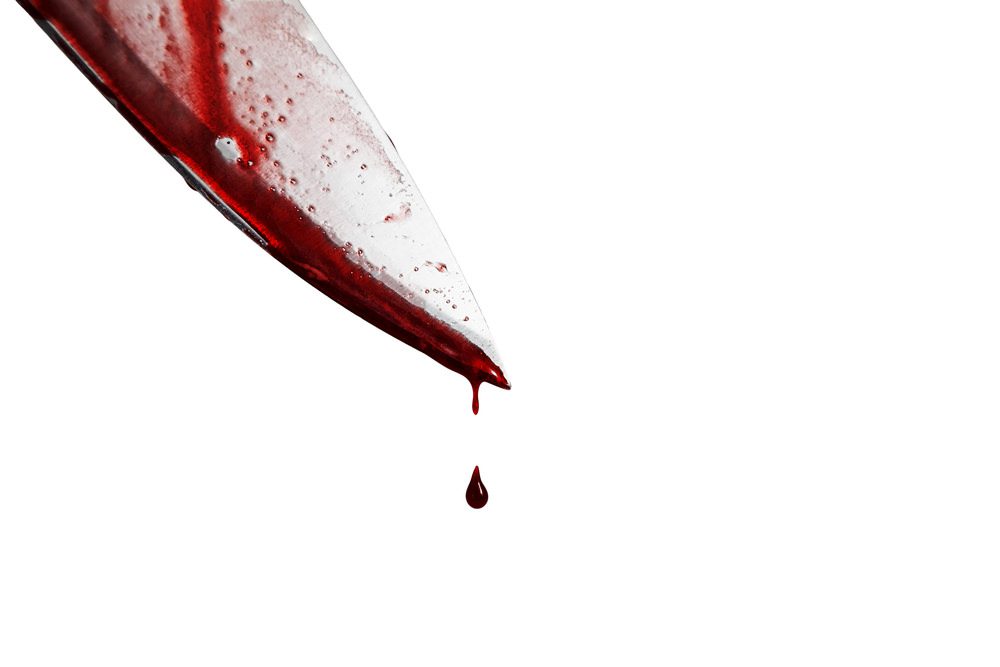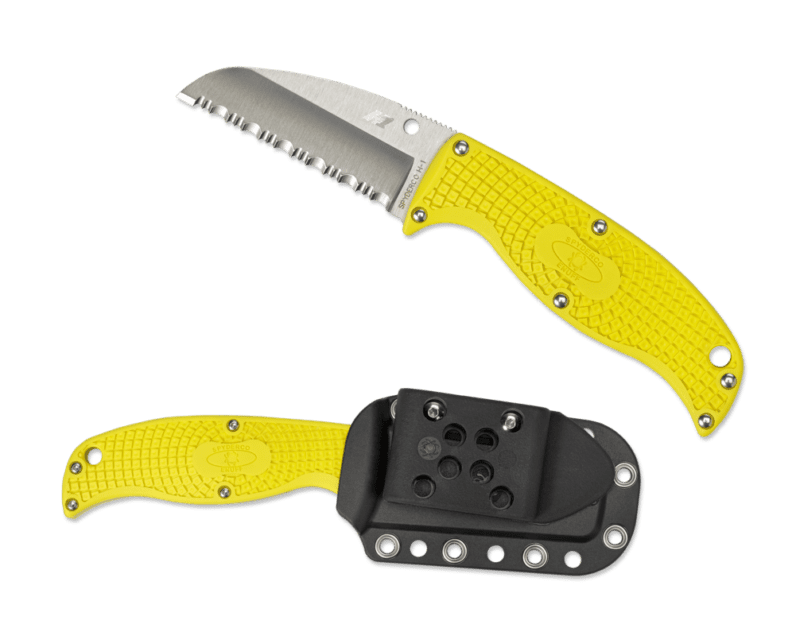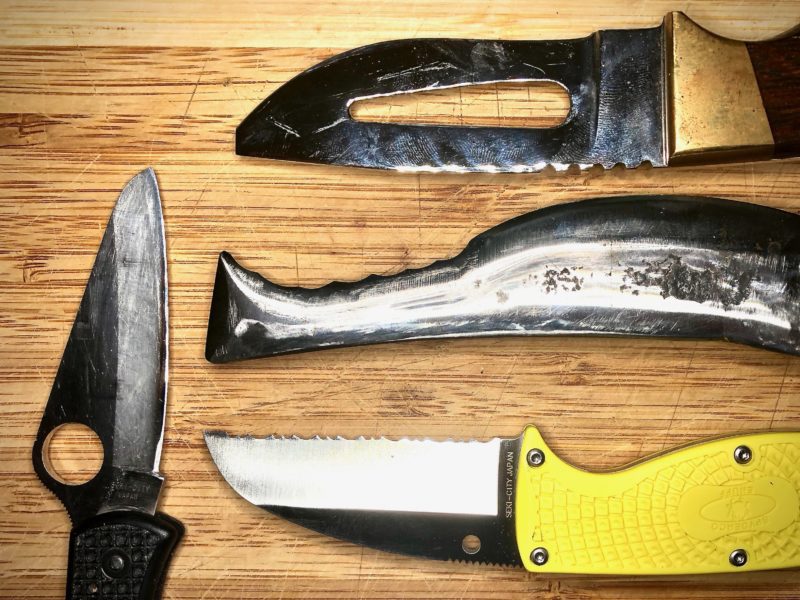Was The World’s ‘Northern-Most Island’ Erased From Charts?
by Kevin Hamilton (University of Hawaii) In 2021, an expedition off the icy northern Greenland coast spotted what appeared to be a previously uncharted island. It was small and gravelly,...


Photo by SanchaiRat / Shutterstock
by Capt. John Konrad (gCaptain) A disturbing and dangerous trend is growing offshore. Despite overwhelming evidence that knives are essential to the safety of life at sea, shipping companies are increasingly banning the use of knives aboard ship.
Back in the days of tall ships, captains would break off the pointy tips of knives to prevent injuries and mutiny. Today’s captains should consider banning pointy tipped knives altogether. Doing this will help prevent minor injuries and keep over-zealous HR/HS&E managers and corporate safety consultants at bay.
The people splashing in the water and sitting in the raft were all screaming for a knife, but nobody could find one!
On April 20th, 2011, the Master and the last of the survivors of a massive explosion at sea plunged into the water and climbed into a liferaft to escape the flames and heat of an inferno raging on the deck of their vessel.
The fire crept closer to the raft, no more than twenty-five feet away from the floating plastic liferaft they knew would soon melt if somebody didn’t cut the rope (painter) connecting their raft to their ship. The people splashing in the water and sitting in the raft were all screaming for a knife, but nobody could find one!
As hope just started to fade, the bow of the Tidewater boat Damon Bankston peeked through the smoke and chaos. Captain Alwin Landry cut the engines and glided the Bankston toward them. A man came to the bow holding a large folding knife. Captain Curt Kuchta swam to the boat, took the knife, then swam back to the raft and cut the rope. Within minutes the Bankston was towing the raft to safety.
Why didn’t anyone aboard the liferaft, including officers trained at maritime academies where a knife was considered an essential part of the cadet uniform, have a knife?
The answer is that a crewmember aboard another rig owned by the same company, Transocean, had accidentally stabbed himself in the leg causing a relatively minor injury. The HR department at Transocean reacted to this incident by banning the use of knives aboard all their ships.
We can not prevent HR managers from making foolish/dangerous decisions like this but we can take one simple and effective step to reduce the minor self-stabbing injuries that give HR managers headaches. We can trade in our pointed blade knives for safer, more effective and more traditional Sheepsfoot blades.


Every week gCaptain receives email from people who love a particular knife brand asking us to carry these brands in the gCaptain store. We typically refuse to carry some of the most popular brands. We do not carry the well designed Boye knives, for example, because we do not find their serration pattern to be the most effective in an emergency. CRKT knives have some of the best serration patterns but have discontinued their Marine Utility Knife.
The number one reason we don’t carry some of the most popular brands – including Kershaw, SOG, Benchmade and Leatherman– is the fact most of their knives have pointy tips that increase the risk of minor stab wounds – exactly the injuries HR managers fear – when used on the rolling and pitching deck of a ship at sea.
We prefer the knives made by Spyderco and Myerchin, two excellent companies that are committed to producing high quality stainless sheepsfooted blades that professional sailors love to use.


A sheepsfoot blade has a straight edge and a straight dull back that curves towards the edge at the end. They have been used at sea for centuries and get there name because they were once used to trim the hooves of sheep. Their shape bears no similarity to the foot of a sheep.
Sheepsfoot blades have a few other advantages over pointy tip blades.
Sheepsfoot is great for carving tasks. Have you ever been bored and had a knife on you with a stick nearby? Sheepsfoot blades have a large belly portion that doesn’t curve upward to a pointy tip, allowing for a knife with excellent carving capabilities.
Sheepsfoot blades are perfect for rescue/emergency situations and (along with blunt-tip blades) are the blade of choice for firefighters worldwide. For example, if you need to cut an article of clothing off of an injured crewmate, a sheepsfoot blade could cut through the clothing without much risk of accidentally stabbing the person. It can also dig safely between tightly coiled rope and skin.
Sheepsfoot blades are also stronger at the tip allowing you to use more torque near the tip without fear of the blade snapping off.
Sheepsfoot blades may not look as “cool” as the sexy, lethal-looking knives made by companies like Kershaw, but they are a time-tested design that has been used by sailors for centuries. More importantly they significantly reduce the chances for the minor stabbing injuries that, in 2018, are resulting in HR departments banning the use of ALL knives aboard ship.
For this reason, we ask all mariners to leave their pointed blades onshore and purchase a quality sheepsfoot or blunt-tip rescue knife for use at sea. We also ask that Captains carry these knives in their ship’s store so crew members can purchase these knives immediately.
We believe strongly that every sailor should carry a knife at all times aboard ship. If your company has already banned knives from being carried at all times please inform your HR manager that there is a safer option…. the sheepsfoot blade.
Sheepsfoot blade knives can be purchased at the gCaptain store, your local chandlery, or via Amazon.
Note: Not all sheepsfoot blades are safe. Benchmade’s popular and very well built Griptilian, for example, is more akin to a tanto blade than a traditional sheepsfoot. Use your common sense. If the tip looks dangerous then it probably is. If you really like benchmade consider purchasing a Triage 916 instead.
Join the gCaptain Club for curated content, insider opinions, and vibrant community discussions.


Join the 105,944 members that receive our newsletter.
Have a news tip? Let us know.
Access exclusive insights, engage in vibrant discussions, and gain perspectives from our CEO.
Sign Up




Maritime and offshore news trusted by our 105,944 members delivered daily straight to your inbox.



Essential news coupled with the finest maritime content sourced from across the globe.
Sign Up